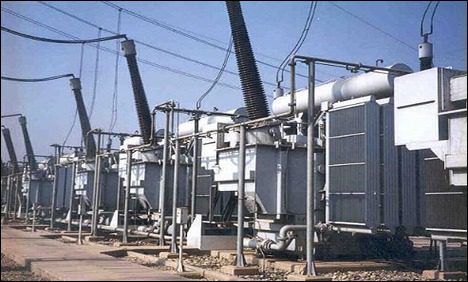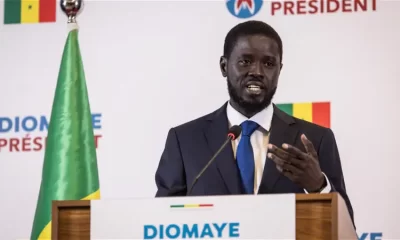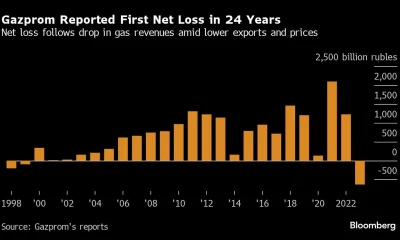National Issues
Show Me the Money: the Nigeria Electricity Supply Conundrum -By Belije Madu


“Show me the money” is a well-known phrase used by Rod Tidwell (Cuba Gooding Jr.), while negotiating with his agent, Jerry Maguire (Tom Cruise), in the 1996 film, Jerry Maguire. This catchphrase typifies the current situation of the Nigerian Electricity Supply Industry. Currently, the flow of money within the industry is the fundamental problem preventing Nigerians from enjoying continued and sustainable improvement in electricity supply and thus the gains of the Nigerian power sector reforms.
Nigeria is a country of over 170 million people and over 25 million households, with a rapidly growing and semi-defined electricity customer base. In February 2015, when the Transitional Electricity Market was declared, power generation was a monthly average of approximately 3,500MW, but has since then experienced a decline to a monthly average of approximately 3,000MW as at June 2016. This declining performance is against an estimated increasing power demand of over 17,720MW that is suppressed. Obviously, the paucity of electricity supply, occasioned by the limited power generation, as well as inadequate infrastructure, remains a key growth constraint for the Nigerian economy. The continued supply of abysmally low electricity accounts for the significant throttling of the economy. The average Nigerian’s desire and willingness to pay an appropriate price for electricity consumed can be clearly seen in the great demand for generators of all shapes and sizes, and how much they pay to operate and service these generators.
The rule of thumb calculation for estimating sufficiency of electricity supply for any industrialised or industrialising nation is at least one gigawatt (i.e. 1,000 megawatts) of electricity generation and consumption for every one million heads of population. This rule provides a useful indicator of the scale of the investments that will need to be made in the Nigerian Electricity Supply Industry, over the coming years, if the deficit in the supply of electricity to Nigerians is to be overcome.
The Nigerian electricity sector reform act (ESPR 2005), signed into law in March 2005, created the legal platform for private sector investment and technical know-how, to be brought into the Nigerian Electricity Supply Industry (NESI). In August 2010, with much fanfare, the president of the Federal Republic of Nigeria launched the Power Sector Roadmap, which outlined the critical areas required to remove obstacles to ensure private sector investment. Additionally, the National Electricity Regulatory Commission (NERC) promulgated the Multi-Year Tariff Order (MYTO-2), which became effective on June 1, 2012, bringing electricity tariffs to cost reflective levels, hence making it possible for the private sector to invest in the industry. While the Transitional Electricity Market was kicked-off on February 1, 2015, extensive progress has been made in those areas; however, the average Nigerian is yet to reap the benefits via a continuous and appreciable improvement in electricity supply. Why?
When the ESPR 2005 was signed into law and the Nigerian Power Sector Reform programme became launched, it was envisaged that electricity supply to Nigerians would grow, such that the vision 20:20 target of 40,000MW by 2020 would be achieved. The achievement of this target is clearly not anywhere in sight. Though it must be said that this target has been scaled-down to a more realistic target of 10,000MW by 2019, by the current administration.
It is envisaged that to close the electricity supply deficit gap and meet the growing electricity needs of Nigerians, investments in excess of US$ 3.5 billion per annum would be needed over the next 10 years. Obviously these sums cannot be funded by the Nigerian government, both local and international private sector participants will have to be incentivised to partner with the Nigerian government in this endeavour. It is necessary to note that in March 2011, during the onset of the privatisation process of the six PHCN Generation and 11 Distribution Companies, a total of 152 (one hundred and fifty two) consortia from over thirty countries, from different parts of the world, purchased bid documents, indicating the high-level of local and international interest the Nigerian Electricity Supply Industry then attracted. Suffice it to say, that this extensive interest has not translated into investments and timproved electricity supply to the average Nigerian. Why?
The answers to the above questions are simple and straightforward. The Nigerian Electricity Supply Industry, despite its huge potential, is yet to demonstrate sustainable returns to investors, across the electricity supply value chain.
The success of the ESPR 2005 and, consequently, the Nigerian Power Sector, is predicated on a simple principle – that of the electricity supply value chain; while the electricity supply value chain revolves around three simple principles.
The first principle of the electricity supply value chain is that while energy moves from the left to the right – via the fuel supplier to the fuel transporter, to the power generator, to the power transmitter, to the power distributer or Distribution Companies and then to our homes or commercial enterprises,tThe money moves from right to the left. That is, from us to the Distribution Companies, down the value chain and finally to the fuel transporter and fuel supplier. In the electricity supply value chain, only one participant, the Distribution Companies, currently, are statutorily empowered to collect and account for customer payments, on behalf of the value chain.
The second principle of the electricity supply value chain is that energy available at each stage of the value-chain is limited by the previous stage. Consequently, what the Distribution Companies can distribute is limited by what the Transmission Company of Nigeria can transmit. While what the Transmission Company of Nigeria can transmit is limited by what the Generation Companies can generated, which is in turn limited by available gas supply and water supply, in case of Hydro-power generating stations.
While, the third principle of the electricity supply value chain is that for adequate energy to flow sustainably to consumers, adequate cash MUST flow in the other direction, down to the gas supplier and gas transporter.
Consequently, the amount of electricity supplied will be limited by the adequacy of funds collected and remitted by Distribution Companies to service the remaining part of the electricity value chain.
This simply means that if anticipated growth in electricity supply to Nigerians is not happening as anticipated by those who designed the Nigerian Power Sector Reforms, and consequently Nigerians are not receiving adequate electricity at home, the primary area for attention should be the adequacy of funds collected and remitted by Distribution Companies meant to service the remaining part of the electricity value chain. Because, this is the primary indicator that will ensure that investors from different parts of the world, who had earlier expressed overwhelming interest during the bidding process for the PHCN asset, come in to invest in the Nigerian Electricity Supply Industry.
On Sunday February 1, 2015, the Transitional Electricity Market (TEM) was declared by the Honorable Minster of Power, signifying the kick-off of the Nigerian electricity supply value chain. Put differently, Nigeria’s unbundled power sector was to be contractually bound to guarantee inverse flows of funding in exchange for electricity supply. TEM’s introduction, the first private power market in Africa, is designed to ensure that market participants operate under Market Rules and Grid Codes, and as such, the value chain was supposed to function like the proverbial five fingers of the same hand.
However, a review of the Nigerian electricity supply and funds collected/remitted trend from February 2015 to date, clearly indicate the declining remittances by Distribution Companies being made available to the Nigerian electricity value chain. It is necessary to point out that a decline from an average market performance of 70 percent recorded in February and 74 percent recorded in March 2015, to a continuous decline resulting in a market performance of 23 percent in June 2016, has been recorded. Suffice it to say that going by the value chain principles outlined above, this does not portend good fortunes for the Nigerian Electricity Supply Industry, if immediate steps are not taken.
It will be necessary to outline the short-term and strategic impact of this situation, to ensure that impact of the declining performance on the electricity value chain is fully appreciated. Electricity supply has a long gestation period, from generation through transmission to distribution. Consequently, for electricity supply to be sustainable and grow both in the short-term and long-term, the electricity supply has to be continuously refreshed and expanded via the development and implementation of fuel supply, power generation, power transmission and power distribution projects.
On the short-term, the current poor status of the electricity market has reduced and almost eliminated the ability of fuel suppliers, generating companies and transmission company to meet their financial obligations to their vendors and suppliers, thereby threatening to completely undermine the entire electricity value chain. Obviously, it is not sustainable to keep power generating plants and transmission lines operational with the current level of payments, as the value chain is currently receiving. This is due to the fact that Generation Companies and the Transmission Company of Nigeria have to cater for their liabilities, which include gas supply and transportation, long term maintenance, procurement of expensive spares, remuneration of staff, servicing of bank loans and payment of insurance premiums required to sustain their operations.
Strategically, given the fact that in the reformed Nigerian Electricity Supply Industry, projects will have to be privately financed, supported by non-recourse or limited recourse loans, with long-term agreements financed by the Nigerian Electricity Market. This makes it necessary for the electricity market to be functional and healthy to attract the desired local and international investment and thus translate to improve electricity supply to the average Nigerian.
What is even more unfortunate is the fact that the lack of consistency and downward movement in the collection and remittance of market funds has become the trend in the Nigerian electricity market and this does not augur well for attracting foreign investors. Additionally, going against the spirit of the Nigerian Power Sector Reforms, Distribution Companies have obtained court injunctions preventing the Generation Companies from accessing the Bank Guarantees issued to make the Generation Companies financially whole, for electricity already generated and supplied. If this situation remains unchecked, it might result in the financial collapse of the Generating Companies and then the collapse of the Nigerian electricity value chain and ultimately, the collapse of the Nigerian Electricity Supply Industry, which is still at its inception stages.
Those responsible for the Nigerian Electricity Supply Industry should note that addressing issues bothering on financial viability of the electricity supply value chain is the main and immediate issue confronting Nigerians from enjoying the benefits of the Power Sector Reforms.
Consequently, improving the financial viability of the electricity supply value chain will ensure the improvement of the electricity service delivery and thus provide the required platform and goodwill to continue driving the industry reforms, since electricity customers are keen to see immediate improvements in service levels and will not be satisfied with the promise that improvements will materialise after the sector has been fully reformed.
Taking all the above into consideration, it is recommended that the following steps should be implemented achieving immediate and sustainable improvement of electricity supply to Nigerians:
Step 1: Convene a Nigerian Electricity Supply Industry Financial Round-table to discuss the current financial situation of the Nigerian Electricity Market and to agree on the solutions and way forward, for both the short-term and medium-term. Interrogate the methodology of adopting and improving on the 74 percent market performance recorded in March 2015 and incorporate this methodology into the go-forward position.
Step 2: After the Financial Round-table, prepare a clear plan of how outstanding payments to all market participants in the electricity value chain will be made and thereafter commence payment of such monies.
Step 3: After the Financial Round-table, implement a strict monitoring and benchmarking of collection/ remittances of market funds. This process will also entail all Distribution Companies withdrawing all court cases associated with preventing the Power Supply Guarantees posted, from being accessed.
Step 4: Reconstitute the Boards of the Distribution Companies to ensure that the Nigerian government equity is adequately represented and interest protected, by appointing stakeholders from Generation Companies, Transmission Company of Nigeria and Gas Supply Companies, into the Boards of Distribution Companies.
Step 5: In line with the principles of the Multi Tariff Year Order (MYTO), electricity tariff will need to be adjusted to cost-reflective levels, taking into account the depreciated value of the naira within the last one year. This adjustment will also need to take into consideration the current hardships that Nigerians are currently undergoing. It is recommended that industrial and commercial customers bear majority of this adjustment, in a bid to limit the adjustment that residential customers will feel.
The government of President Muhammadu Buhari is similar to a sprinter required to run the last leg of a relay race, for a Reform process which stared in 2005, with the passing of the ESPR Act, into law. Therefore, it is strongly recommended that the last leg of the race should be effectively run, if we are to show the world the enormous potential of the Nigerian Electricity Supply Industry and thus achieve the provision of uninterrupted electricity supply to Nigerians, in line with the vision of this Administration. I believe the government of President Muhammadu Buhari can do this, and even much more.
Belije Madu is an Abuja-based electricity consultant.



















